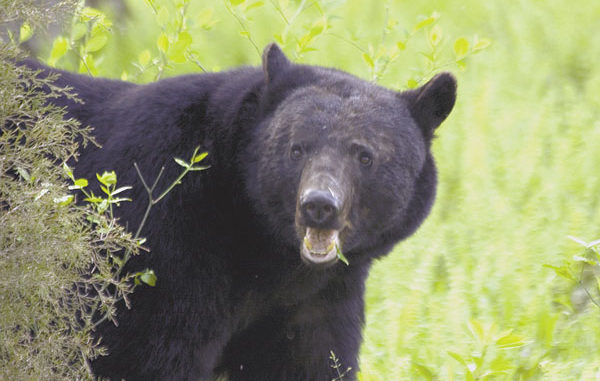
The state manages public hunting on almost two million acres. Here’s some help finding the ones that will be hot this year for your favorite wild game.
Being nearly a quarter-million strong, North Carolina’s sportsmen place a heavy demand on the state for places to hunt and fish.
That means a large need exists for public hunting properties, i.e., game lands. The N.C. Wildlife Resources Commission, forced to cut back on purchases because of economic belt-tightening, manages slightly more than two million acres on 86 public lands, featuring a wide variety of game species, from rabbits and squirrels to waterfowl to big game, including deer, black bear and wild turkeys.
But not all are created equal. Big and small, east or west, different tracts offer different opportunities. Here’s a look at the best public-hunting opportunities North Carolina has to offer for the 2010-2011 season.
EASTERN REGION
Deer
Best game-land bets: Roanoke River Wetlands Game Land and National Wildlife Refuge, Suggs Mill Pond, White Hall Plantation, Juniper Creek, Holly Shelter, Croatan National Forest, Van Swamp, Gull Rock, Chowan Swamp.
The Roanoke River Wetlands Game Land and National Wildlife Refuge are perhaps the top places among all public lands in eastern North Carolina to find good numbers of whitetails, as well as quality bucks.
“Roanoke River is a really good spot for deer,” said Tommy Hughes, the Commission’s supervising biologist for the the eastern part of the state. “The thing hunters need to remember is that all hunting at Roanoke River is by permit, not only for deer but for all species.”
The Roanoke River Game Lands (35,457 acres) are divided among properties in Bertie, Halifax, Martin and Northampton counties owned by the Commission and the U.S. Fish and Wildlife Service.
“The sections on the south side of the river, the Martin County side, are owned by the state, while the other side of the river is (federal) land,” Hughes said. “A lot of the game land is accessible only by boat, and hunters should remember that.”
Another top-flight, permit-only game land is the 10,760-acre Suggs Mill Pond in Bladen and Cumberland counties.
“It probably doesn’t have as many deer as other areas, but there’s a good population,” Hughes said.
Hunters who want to enter Suggs Mill Pond during hunting seasons need a permit for driving on the roads.
“The only new piece of property (the Commission) acquired is the White Hall Plantation, 1,430 acres on the Cape Fear River between White Oak and Kelly,” Hughes said.
Purchased with Natural Heritage Trust Fund money, the White Hall Game Land has river frontage, sloughs, bottomland hardwoods and upland pines.
“It should offer some pretty good deer hunting as a new game land,” Hughes said.
Juniper Creek Game Land, located in the Green Swamp section of Brunswick and Columbus counties, is one of the largest public lands in the southeast at 18,624 acres.
“It has a lot of dog-hunting opportunities,” Hughes said, “but the deer are a little smaller in size.”
Holly Shelter, at 64,473 acres and entirely inside Pender County, is one of the top deer areas north of Wilmington.
“It’s got a permit-only hunting section, the Bear Garden Tract (on the north end), but it can be anything — dog hunting or still hunting,” Hughes said. “The rest of the game land, Old Holly Shelter, is a 3-day-per-week hunting area. It’s a good place to find deer.
“Holly Shelter also has two disabled hunting (stands), along with two at Suggs Mill Pond, and one at White Oak River (Game Land).”
Croatan National Forest is the east’s largest game land at 160,724 acres, spread across Carteret, Craven and Jones counties.
“Still and deer-dog hunting is wide open at Croatan, six days per week, no permits needed,” Hughes said.
Van Swamp Game Land (5,482 acres in Beaufort and Washington counties) also has a large deer population.
“It’s got pine plantations, pocosins and some hardwoods-pine mixed areas,” Hughes said. “We’ve thinned several pine plantations and did some herbicide treatment to create deer and bear browse. Dog and still-hunting is allowed there.”
Gull Rock, 34,346 acres spread over three sections in Hyde County, “has quite a few deer, but a person has got to be pretty tolerant of mosquitoes. Some hardy souls go there to hunt deer,” Hughes said.
Chowan Swamp Game Land (27,516 acres in Bertie, Gates and Hertford counties) is another 3-section game land that stretches on either side of the Chowan River near Winton with most of the acreage on the north shoreline (Gates County).
“The Sandbanks area is pretty open, and it has a lot of deer,” Hughes said. “We’ve thinned a lot of the area, so the deer habitat is improving.”
Bear
Best game-land bets: Buckridge, Lantern Acres, New Lake, Chowan Swamp, Van Swamp, Angola Bay, Croatan National Forest, Chowan, Juniper Creek, Holly Shelter, Bladen Lakes State Forest, Long Shoal Tract of Gull Rock, Dare Bombing Range, Buckridge.
Most bears taken in eastern North Carolina are on private land, with only 77 taken on game lands last season.
Tyrrell County, which includes Buckridge, Lantern Acres and New Lake game lands, accounted for almost a third of those bears. Other game lands with bears include Chowan Swamp, the Long Shoal Tract at Gull Rock, Van Swamp, Angola Bay, Juniper Creek, Holly Shelter, Croatan, Bladen Lakes State Forest and the Dare Bombing Range.
“The Sandbanks of Chowan Swamp and Long Shoal both have bears, while Van Swamp allows dog and still-hunting,” Hughes said. “Croatan National Forest also gets bear hunted fairly heavily. Angola Bay was a thick tangle of vines and shrubs when we acquired land from International Paper, but it has a lot of plantation land, and some bears are killed there. Juniper Creek in the Green Swamp also has some bears, along with Holly Shelter, and some bear hunting occurs at Bladen Lakes State Forest, which is open to dog hunting.”
One of top permit-only bear hunting areas is the Dare Bombing Range. It offers back-to-back, 2-day still hunts and two dogs hunts in November and December.
“People are more apt to see a bear and bear hunters do take advantage of the Dare Range, but there’s only four days to hunt,” Hughes said.
Waterfowl
Best game-land bets: Goose Creek, Suggs Mill Pond, White Hall Plantation, Roanoke River Wetlands and National Wildlife Refuge, J. Morgan Futch, Gull Rock, Croatan National Forest, North River, Lantern Acres, Holly Shelter, White Oak River.
Eastern game lands offer the best public waterfowl hunting in the state, starting with the impoundments at Goose Creek in Beaufort and Pamlico counties.
“With the six impoundments at Goose Creek, we have good waterfowl opportunities,” Hughes said, “but all of them are permit areas.”
Those impoundments include Spring Creek, Campbell’s Creek, Hunting Creek, Smith Creek, Hobucken and the highly-popular Poplar’s Point near the mouth of the Pamlico River.
“Suggs Mill Pond also has (five) impoundments and the lake,” Hughes said. “It’s also a permit-only area.”
The new White Hall Plantation Game Land offers wood duck, gadwall, widgeon and teal.
“It has a few mallards, but the people who owned the property before us always mention gadwall and widgeon,” Hughes said. “We’ll be having permit duck hunting on that tract for the first time this year.”
The Roanoke River tracts also have permit hunts for waterfowl spread up and down the river’s expanse near Plymouth.
“The Whitley Impoundments on the Conoho Farms Tract are particularly good,” Hughes said.
J. Morgan Futch Game Land in Tyrrell County is the only state game land that is completely waterfowl impoundments; it has 15 impoundments with permits spreading hunters across its 600 acres.
“It’s a good place to shoot ducks, and you also have a good chance to shoot a swan,” Hughes said.
Gull Rock has one impoundment (Loop Road) on its three sections of 34,346 acres spread across Hyde County.
“The Loop Road impoundment usually has some ducks, but when the sound gets rough, it can have a lot of ducks seeking shelter,” Hughes said.
Croatan National Forest has one impoundment, Catfish Lake impoundment, just north of the lake of the same name, and it offers some waterfowl hunting.
North River Game Lands covers 19,939 acres in Camden and Currituck counties off the western river shore in Great Swamp.
“The three impoundments are fairly new, and birds are just starting to learn about them,” Hughes said. “We see a lot of wood ducks there, but there are a lot of private impoundments up there.”
Small Game
Best game-land bets: Suggs Mill Pond, Holly Shelter, Stones Creek, Roanoke River Wetlands and National Wildlife Refuge, Croatan Forest, Gull Rock, White Oak River, Bladen Lakes State Forest, Lantern Acres, Holly Shelter, Croatan, Chowan Swamp, Holly Shelter.
Small-game hunting can be average to good to excellent at eastern game lands, depending upon the type of game hunters are seeking.
The Commission has dove fields at Suggs Mill Pond, Holly Shelter, Stones Creek (Chowan County), Croatan National Forest, Roanoke River and Gull Rock.
“The Folkstone and Gull Rock dove fields are the only ones that don’t require a permit,” Hughes said. “The Huggins Tract on the White Oak River Game Land also has a dove field, and there’s one managed permit field at Bladen Lakes State Forest.
“If hunters go to the web site (www.ncwildlife.org), they can see updates on dove-field conditions.”
Rabbit hunters might try Stones Creek.
“Stones Creek seems to have quite a few rabbits,” Hughes said, “along with Croatan National Forest.”
Holly Shelter has a few rabbits, some squirrels and a few quail.
“Roanoke River has good opportunities for squirrel hunting, although there don’t seem to be many squirrel hunters in the east anymore,” Hughes said.
Gull Rock has “limited” small-game hunting, mostly on the north side of the property near Hydeland and Mattamuskeet High School, Hughes said.
“It has some little bit of quail hunting,” he said.
CENTRAL REGION
Deer
Best game-land bets: Jordan Lake, Roanoke River Wetlands & National Wildlife Refuge, Tillery, Shearon Harris, Uwharrie, Butner-Falls, Caswell, Butner-Falls, Embro, Sandhills, Pee Dee River, Hyco, Mayo, Shocco, Second Creek.
Deer hunting should continue to be outstanding at several of the piedmont’s game lands, particularly Jordan Lake.
“Jordan Lake has the highest game-land deer kill in the state,” said Harlan Hall, the Commission’s supervising wildlife biologist for the region.
A change in regulations will see full-season either-sex hunting at Jordan Lake for the first time, he said.
Other top public-land deer hunting regions in the central zone include the western section of Roanoke River Wetlands and National Wildlife Refuge Game Lands.
“(That area) also contains a bunch of IP (International Paper) tracts in Halifax, Northampton, Edgecombe, Nash and Vance County, totaling 30,000 acres,” he said.
The only game lands that don’t allow dog hunting for deer are Roanoke River and Tillery (Halifax County, 5,219 acres).
The small Shearon Harris Game Land draws some pressure from deer hunters because of its proximity to Raleigh.
“Deer hunting also is good at Butner-Falls, Caswell and Uwharrie,” Hall said.
Sandhills Game Land (61,223 acres scattered across Hoke, Moore, Richmond and Scotland counties) has “only fair” deer hunting, Hall said, “but we changed things down there and reduced the number of either-sex permits from 200 to 100, but now they’ll be good for the whole season instead of just three days.”
With its hardwood ridges and proximity to several large cities, including Charlotte, Uwharrie National Forest (50,189 acres in Davidson, Montgomery and Randolph counties) once again should provide a lot of game-lands whitetails.
“We also have a few tracts at the Pee Dee River Game Land (6,829 acres in Anson, Montgomery, Richmond and Stanly counties) that offer some deer hunting,” Hall said.
Second Creek Game Land (1,140 acres, Rowan County) offers permit-only deer hunts.
“It’s not big, but (it) has been fairly popular because of it’s close to Charlotte,” Hall said.
In the northern piedmont, Hyco and Mayo game lands in Person County “are fairly sizeable and are wide open” for deer hunting, Hall said, “as are Caswell, Person County and Granville County game lands, and they’re all open to dog hunting as well.”
Waterfowl
Best game-land bets: Jordan Lake, Butner-Falls, Shearon Harris, Caswell, Roanoke River Wetlands & National Wildlife Refuge, Chatham, Lee, Alcoa, Hyco, Mayo, Sandhills.
Depending on weather conditions, Butner-Falls and Jordan Lake should offer the best waterfowl hunting in the central zone.
“We’ll have five of seven waterfowl impoundments open at Jordan this season, because we have to rotate them to let some dry out so we don’t kill the trees,” Hall said. “These are greentree impoundments and not planted. If we don’t let them dry out, the trees will die.”
Jordan’s impoundments will attract mostly wood ducks, mallards and teal, Hall said, and no permits are needed to hunt them.
On the other hand, Butner-Falls Game Land has several greentree and several planted impoundments, and some of the blinds require a permit.
“Crops of milo, millet and corn are looking decent,” Hall said, “but one of the greentree impoundments, Patterson Road, will be closed this season.”
Butner-Falls will draw wood ducks, mallards and teal and “a fair number of ringnecks later in the season, but you’re liable to see anything, including shovelers,” Hall said.
Shearon Harris Lake isn’t managed with impoundments but is popular with hunters who seek mostly ringnecks and diving ducks.
Shooting hours at Butner-Falls and Jordan Lake are identical, starting 30 minutes before sunrise and ending at sunset.
“At Caswell Game Lands, hopefully we’ll have the two waterfowl impoundments operating, but a contractor is trying to complete repairs at the High Rock impoundment dam,” Hall said. “Those two impoundments have mostly mallards and wood ducks.”
Hall said Roanoke River Game Lands has no impoundments, but it does have a lot of beaver ponds and waterfowl-hunting opportunities, “depending upon the water level in the river.” All game lands hunts at Roanoke River require permits.
Hyco and Mayo, both larger impoundments, also attract diving ducks, while scattered beaver ponds along feeder creeks hold mainly wood ducks.
Small game
Best game-land bets: Uwharrie, Butner-Falls, Jordan Lake, Sandhills, Caswell, Second Creek, Roanoke River Wetlands and National Wildlife Refuge, Embro.
Rabbits and squirrels remain the most-likely prospects for small-game hunters in the Piedmont, with few quail available, even after years of Cooperative Upland-habitat Restoration and Enhancement (CURE) work.
“Quail hunting is still very spotty at most central region game lands,” Hall said. “The population hasn’t responded as well as some people expected. It’s just a slow process and will take a while. We hear and see quail when working at game lands, but the (hunter) surveys aren’t showing good numbers of quail.”
Best bets for small-game hunters most likely will be rabbits and squirrels.
“Our (employees) have seen a lot of rabbits at Caswell, and there have been successful rabbit hunts at Sandhills Game Land,” Hall said. “It’s got some good rabbit cover.”
Embro, Tillery and the Roanoke River Wetlands and National Wildlife Refuge in the eastern portion of the piedmont zone have a lot of cutovers and early successful habitat that is good for rabbits, Hall said.
Butner-Falls also has some fields off Brickhouse Road that should have good rabbit hunting.
Squirrel hunting should be good at Uwharrie National Forest, with its plentiful hardwood ridges, along with Butner-Falls and Jordan Lake. Fox squirrels are present at the Sandhills Game Land.
Butner-Falls, Jordan Lake, Caswell, Pee Dee River, the Sandhills, Second Creek and Tillery game lands all have planted dove fields that draw good numbers of birds and hunters and birds.
WESTERN REGION
Deer
Best game-land bets: Green River, Mitchell River, Thurmond-Chatham, DuPont State Forest, Sandy Mush, Needmore, South Mountains, Johns River, Buffalo Cove, Pisgah.
With its mountainous terrain, poorer soil than the rest of the state, massive federal lands covered by old-growth trees and little understory for browse, western deer habitat is often best on the game lands that contain river bottoms.
That’s the case at Green River Game Land (14,143 acres in Polk and Henderson counties), according to Kip Hollifield, a regional biologist for the Commission from Marion.
“Green River is pretty similar to everywhere in the mountains except we do have some bottomland around the river, and that seems to have a higher deer population than other game lands,” he said. “(The deer population) probably also plays off private land in Polk County, which is pretty good.”
Commission employees plant clover, annuals, rye, wheat, oats and corn at Green River along the river bottom.
Game lands with huntable deer numbers include Mitchell River (Surry County, 1,729 acres) and Thurmond-Chatham (Alleghany, Wilkes counties, 6,403 acres).
“Mitchell River is basically a long ridge line, but (it) was cut over 12 to 15 years ago and now has a lot of cover and food for deer,” Hollifield said. “Thurmond-Chatham is pretty rough up-and-down hunting, but it has deer.”
Joffrey Brooks, a Commission biologist based in Waynesville, touted the permit hunts at Dupont State Forest (Henderson, Transylvania counties, 10,256 acres) as having potential for deer.
“The permit hunts at Dupont produces some pretty good bucks,” Brooks said. “All the hunts are either-sex, and (biologists) do a good job of managing the herd by sex ratio.”
Brooks also mentioned the Sandy Mush Game Land (Buncombe, Madison counties, 2,600 acres) as a good deer area.
“It’s pretty good, but (it’s) so small it gets a lot of pressure,” Brooks said.
Both biologists said the Pisgah Game Lands contain deer, but it’s so large, hunters must be willing to do some extensive scouting before committing to an area.
Brooks said soft mast was extensive in the mountains this spring and summer, and no late freezes probably mean a good fall acorn crop.
Bear
Best game-land bets: Pisgah, Nantahala, Mount Mitchell and Daniel Boone bear sanctuaries, Cold Mountain, Needmore, South Mountains, Johns River, Buffalo Cove, Mitchell River, DuPont State Forest.
Hollifield and Brooks agreed the Pisgah Game Land (505,217 acres) is the most-likely bet for bear hunters in the western third of the state.
“Pisgah is where most bear hunters go, along with Nantahala (528,782 acres),” Brooks said. “Pisgah seems to have a good bear population. Unfortunately, a lot of bears are in places where you can’t hunt, such as areas around Asheville, including the watershed, which has 12,000 acres.”
Both biologists mentioned the Mount Mitchell and Daniel Boone bear sanctuaries as top places to hunt with permits.
“Hunters can go to the Special Hunt Opportunities booklet to apply for sanctuary bear hunt permits,” Hollifield said.
Cold Mountain Game Land is surrounded by the Pisgah and Nantahala forests and is a top place to hunt bears as well.
“The Santeetlah area gets a lot of pressure from Tennessee hunters,” Brooks said.
Dog and still hunting are allowed within Pisgah and Nantahala.
Waterfowl
Best game-land bets: Needmore, Sandy Mush, Johns River, Nantahala, Pisgah, Buffalo Cove, Cherokee, Cold Mountain.
The Little Tennessee River runs through Needmore Game Land (Swain and Macon counties, 4,525 acres) and offers some good jump shooting for wood ducks, Brooks said.
“Floating the French Broad and the Little Tennessee are about the only places you can find waterfowl hunting in the west, but you can find beaver ponds at many game lands that may have woodies,” Brooks said.
The French Broad River flows on the northern end of Sandy Mush Game Land (Buncombe, Madison counties, 2,600 acres) and offers some jump shooting.
Hollifield’s game-lands sections in the southern mountains include the Johns River Game Land’s beaver ponds and sloughs (permits only).
“But you don’t need a permit to float the river and shoot ducks,” he said. “A few Canada geese also come through.”
Most western float trips will offer wood ducks, black ducks and mallards during the late season, Hollifield said.
Small Game
Best game-land bets: Johns River, Sandy Mush, Pisgah, Nantahala, South Mountains, Perkins, Cold Mountain.
Brooks said Sandy Mush Game Land may be the best overall western game land for small-game hunts.
“We try to manage the area for small game,” he said. “It’s got good rabbit hunting and a few quail. There’s 1,000 acres of open ground, including old fields and pastures.”
All the west’s dove fields are at Sandy Mush as well.
“We manage 40 to 50 acres of dove fields, and it gets so much pressure we have to allow permit-only hunting the first four days of the season,” Brooks said. “After that, it’s open to anyone.
“Last year we had a lot of doves, but then a cold front came through and pushed the birds out.”
Best rabbit hunting occurs at Cold Mountain Game Land, which has seen some timber cutting to create understory for small-game food and shelter.
Hunters can find squirrels at “just about any” of the western game lands, Hollifield said.
“Probably the best game land for rabbits is Perkins in Davie County,” he said. “South Mountain has some pockets that are okay for rabbits, too.”
Most grouse hunting happens in the Pisgah National Forest, especially along the Tennessee border.
“That’s because grouse hunting is better at higher elevations,” he said. “You need to be at last 2,000 feet (above sea level), but grouse numbers have been down the last few years and it’s tough hunting.”
The best dove hunting occurs at Perkins, South Mountain and on Johns River’s permit-only days.
“Those dove hunts are very popular,” Hollifield said. “We plant millet, sunflower, wheat and corn at the fields to attract birds.”
Hunters should visit the Wildlife Commission’s web site at http://www.ncwildlife.org/Hunting/H_GL_Dove_Fields.htm to check out game-land dove fields.

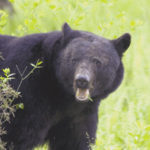
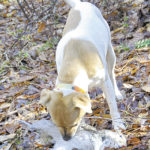
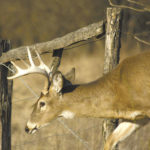
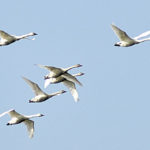
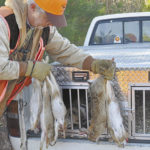
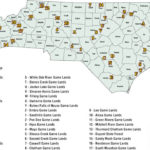



Be the first to comment